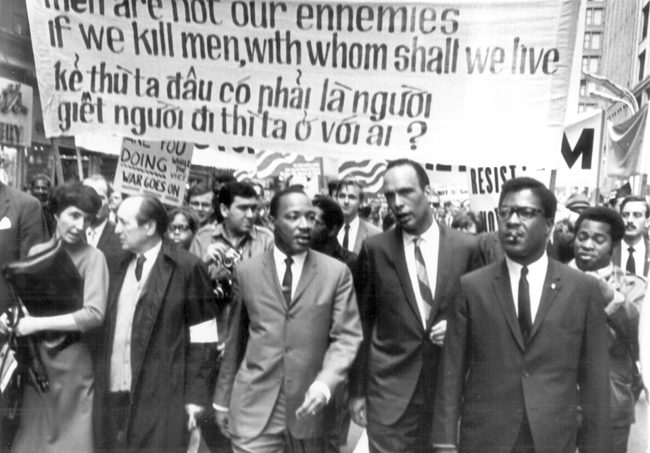
The Poor People’s Campaign: A National Call for Moral Revival co-chairs Rev. Dr. William J. Barber II and Rev. Dr. Liz Theoharis will convene the next Mass Meeting of the Poor People’s Campaign later today (Thursday, October 12) at 7:00 pm CST, at the historic Stone Temple Missionary Baptist Church in Chicago, IL. If you aren’t in Chicago, you can watch the livestream of the Mass Meeting at the Poor People’s Campaign Facebook page and pledge to join the Poor People’s Campaign online.
Chicago has been in the national news regularly over the past few years due to a dramatic uptake in violent crime (including Donald Trump’s bizarre interview with Fox News last night, in which he repeated a discredited claim about an imaginary police officer). According to the Chicago Tribune, “the first three months of 2017,” though the numbers were slightly improved from a horrendous 4,300 shootings in 2016, “still rank as one of the deadliest starts to a year in nearly two decades” — in fact, “the 124 homicides police have officially logged through Wednesday still mark the most for the first three months of a year in at least 17 years.”
Chicago’s recent violence rates disproportionately effect people of color — according to the Heartland Alliance, in 2015, “black men ages 15 to 44 made up more than half of the homicide victims in Illinois, though they accounted for just 3 percent of the population.” Over the summer, three Chicago cops were indicted for attempting to cover up the 2014 police killing of Laquan McDonald by officer Jason Van Dyke, who now stands charged with murder.
According to the recent study by the Heartland Alliance, more than a third of Illinois residents and nearly half of Chicagoans are low-income or living in poverty. The number of people living in neighborhoods in “extreme poverty” grew 384 percent from the year 2000 to 2015.
But the frequently racialized image of violent “inner city” Chicago is only one part of the story. Suburban Illinois has also seen a diaspora of the poor and dispossessed who are being gentrified out of the city; the Heartland Alliance study reports that suburban poverty rose from 34 percent in 2000 to 49 percent in 2015.
According to the Guardian, in Lake County, IL, statistically one of the wealthiest counties in the country, the number of people below the federal poverty line of $19,073 (for a family of three with two children in 2014) “increased by more than 150% from 1990 to 2014, from 25,575 people to 64,432.” The number of people living in “extreme poverty” — “with income less than half of the federal poverty threshold” — has more than doubled in Lake County since 1990.
Contrary to the popular image of Chicago, in the last decade “the number of poor people in suburban Chicago eclipsed the number in the city”: “seven of every 10 suburban municipalities outside Chicago saw the number of poor residents at least double from 1990 to 2014; more than 40% of Chicago suburbs saw their poverty population more than triple during that time.”
Furthermore, though poverty disproportionately effects people of color in Chicago and Illinois, based on sheer numbers there are more poor whites than poor people of color. 675,350 white people live in poverty in Illinois, 8.7% of the white population.
In part, these numbers reflect the changing industrial landscape of Chicago, which saw a massive loss of manufacturing jobs that destroyed the Chicago economy in the 1970s and 1980s.
To return to the issue of violence, according to Dahleen Glanton, the Heartland Alliance study concludes “that the surge of violence in Chicago cannot be stopped without first understanding its root cause, which first and foremost, is poverty.” Ultimately, “any effective anti-violence strategy must include a long-term commitment to eliminating inequity.” This requires structural changes in Chicago’s budget, in its disastrous and racist criminal justice system, and in its education system.
Glanton makes it clear that Illinois politicians are not prepared to take these steps, or even to mention or discuss poverty, without public pressure. This is why the Poor People’s Campaign: A National Call for Moral Revival is going to Chicago — to build a broad social movement, led by the poor and dispossessed, to end poverty forever.